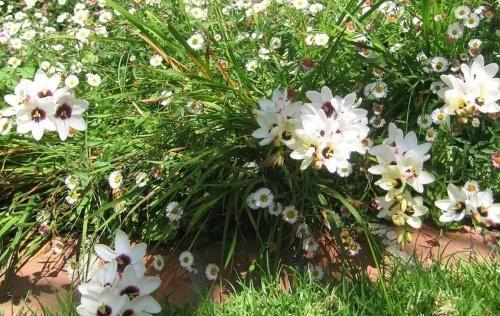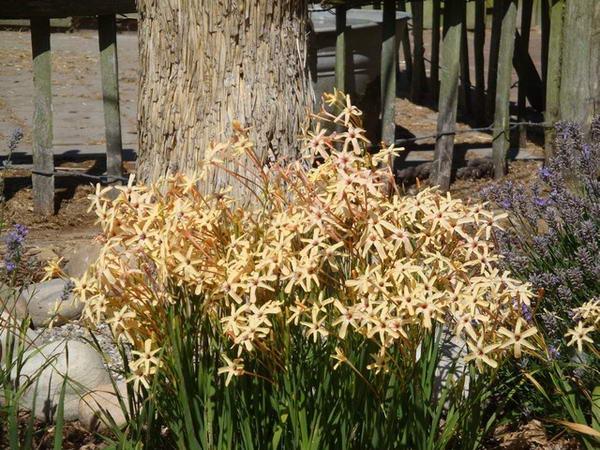Ixia paniculata - planting and caring for a heat-loving beauty
 If you prefer the discreet beauty of simpler plants to chic aristocratic roses, let Ixia paniculata settle in your garden, planting and caring for which is not difficult. The right place and a little attention - that's all a perennial ixia needs. Most of all, those who live in the southern strip were lucky, because culture needs warmth. In regions with a cooler climate, the grower will have to tinker a little with the bulbs, since they will not survive the winter in the garden. However, in return, Ixia will annually delight with its graceful flowering and multiply.
If you prefer the discreet beauty of simpler plants to chic aristocratic roses, let Ixia paniculata settle in your garden, planting and caring for which is not difficult. The right place and a little attention - that's all a perennial ixia needs. Most of all, those who live in the southern strip were lucky, because culture needs warmth. In regions with a cooler climate, the grower will have to tinker a little with the bulbs, since they will not survive the winter in the garden. However, in return, Ixia will annually delight with its graceful flowering and multiply.
Ixia paniculata, planting and caring for the plant

Interestingly, the tropical nature of Ixia also affects its flowering. The buds open only in sunny weather, and fold the petals at night. Closed flowers also stay when it is cloudy.
How and when to plant
 The root system of ixia is presented in the form of corms. They need to be planted immediately in open ground in a permanent place, well-lit and without drafts. Since the bulbs die already at 1 ° frost, it is advisable to plant in the spring. But in “completely” southern places, where the temperature does not drop below 0 in winter, autumn planting is also possible.
The root system of ixia is presented in the form of corms. They need to be planted immediately in open ground in a permanent place, well-lit and without drafts. Since the bulbs die already at 1 ° frost, it is advisable to plant in the spring. But in “completely” southern places, where the temperature does not drop below 0 in winter, autumn planting is also possible.
Flooded areas are absolutely not suitable for ixia. Like all bulbous crops, the plant will simply rot from excess moisture.
Ixia is not particularly demanding on the soil, but it develops better on fertile humus soil. It is not necessary to bury the bulbs too much, 5 cm is enough (the winter planting should be twice as deep). For group planting, a distance of at least 10 cm must be left between each ixia.
How to care for ixia paniculata
 If you planted "different caliber" bulbs, be prepared that not everyone will bloom this season. Only the largest are able to form a peduncle. Small ones (kids) will get stronger over the summer, and will bloom next season.
If you planted "different caliber" bulbs, be prepared that not everyone will bloom this season. Only the largest are able to form a peduncle. Small ones (kids) will get stronger over the summer, and will bloom next season.
In general, Ixia is considered a bit of a whimsical flower, but only for temperate regions. Caring for it is not particularly scrupulous, but it has its own characteristics (taking into account the place of growth):
- Given the moisture-loving nature, you need to water the bushes, especially if there is little rain in the spring.
- Remove weeds in a timely manner so that they do not drown out flowers.
- Feed at least twice. At the beginning of growth, add organic matter, and when buds begin to set, add a mineral complex.
- In autumn, when the leaves dry up, dig up the bulbs and disinfect in a solution of potassium permanganate.They need to be stored in a relatively warm (about 10 ° C) room until spring.
Of the advantages of ixia, it is worth highlighting the fact that it rarely gets sick. The annual change of landing site will only increase its resistance to disease. The flower propagates mainly by bulbs, both whole and by their division.